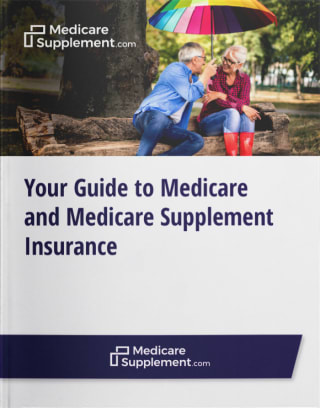How do I get Medicare prescription drug coverage in 2024?
Medicare beneficiaries have two primary options for obtaining coverage for prescription drugs:
Medicare Part D Prescription Drug plans provide coverage exclusively for certain prescription drugs. They can be used alongside Medicare Part A and Part B (with or without a Medicare Supplement Insurance plan), or a Medicare Advantage plan that doesn't include prescription drug coverage.
Medicare Advantage plans are an alternative to Original Medicare (Part A and Part B).
Medicare Advantage plans provide the same coverage as Part A and Part B. Many Medicare Advantage plans also offer additional benefits that Original Medicare doesn't cover, such as prescription drugs.
A Medicare Advantage plan that includes prescription drug coverage is often called a Medicare Advantage Prescription Drug Plan (MAPD).
What drugs are covered by Part D?
Medicare Part D plans provide coverage for both generic and brand name drugs.
Each Part D plan comes with a “formulary,” or a list of drugs covered by the plan. The range of drugs covered will vary from one Part D plan to another.
On the plan formulary, drugs are typically separated by tiers. Certain tiers include only generic drugs, and other tiers include brand name medications.
For example, a tier 1 drug might consist of low-cost, generic drugs and require only a small copayment in order to fill a prescription. A tier 4 drug, however, might be a more expensive name brand drug that requires a higher copayment.
The number of drug tiers and the cost breakdown will vary according to each plan.
Medicare Part D Prescription Drug Plans only provide coverage for prescription medications. These plans do not typically offer any additional benefits.
How does Part D work with Original Medicare?
Part D plans are optional for anyone with Original Medicare.
If you are treated for an injury or illness, your medical care will be covered by Medicare Part A or Part B (depending on the services you receive and the type of facility where you receive them).
If you have Part D coverage and your doctor prescribes medication for your injury or illness, your prescription will typically be covered by your Part D coverage.
How much does Part D cost?
Medicare Part D plans can come with several different types of out-of-pocket costs, such as:
-
Premiums
-
Deductibles
-
Copayments
The premium is the amount of money you will pay each month to belong to the plan.
The deductible is the amount you will have to pay out of your own pocket before your plan coverage kicks in.
For example, if you have a $200 deductible, you will have to pay at least $200 for covered prescriptions during a plan year before your plan will also help pay for costs. Once you have met your deductible, the plan will help cover your drug costs according to the plan terms.
In 2024, Medicare Part D plan deductibles cannot be higher than $545. Some 2024 Part D plans may have $0 deductibles.
Copayments are the amount of money you pay for each prescription after you meet your deductible.
For example, if your plan features a $5 copayment for certain drugs, you will have to pay $5 each time you fill a prescription for that type of drug (after you meet your deductible).
Cost sharing may also be reflected as a percentage, in which case they are typically called “coinsurance.”
Copayments and coinsurance are typically decided by the tier on which a drug is classified in your plan formulary. Some Part D plans may feature preferred pharmacies that offer discounts to plan members for certain prescription drugs.
What is the average premium for Medicare Part D?
In 2024, the average premium for a Medicare Part D plan is $59 per month.2
Part D premiums can vary based on a number of factors, such as:
-
Formulary
Generally speaking, plans with a wider range of coverage may tend to carry higher premiums than plans with more limited coverage.
-
Carrier
Part D plans are sold by private insurance companies, and plan premiums can vary.
-
IRMAA (Income-Related Monthly Adjusted Amount)
Part D beneficiaries who have higher incomes may be required to pay more expensive monthly premiums. This increased premium amount is known as the income-related monthly adjustment amount, or IRMAA.
The chart below illustrates IRMAA adjustments for Part D plans in 2024 (based on 2022 tax returns).


